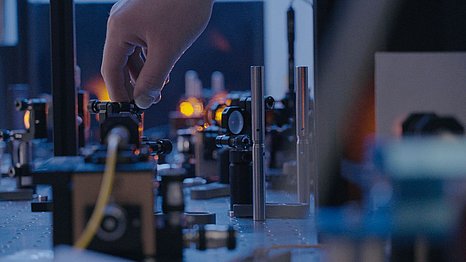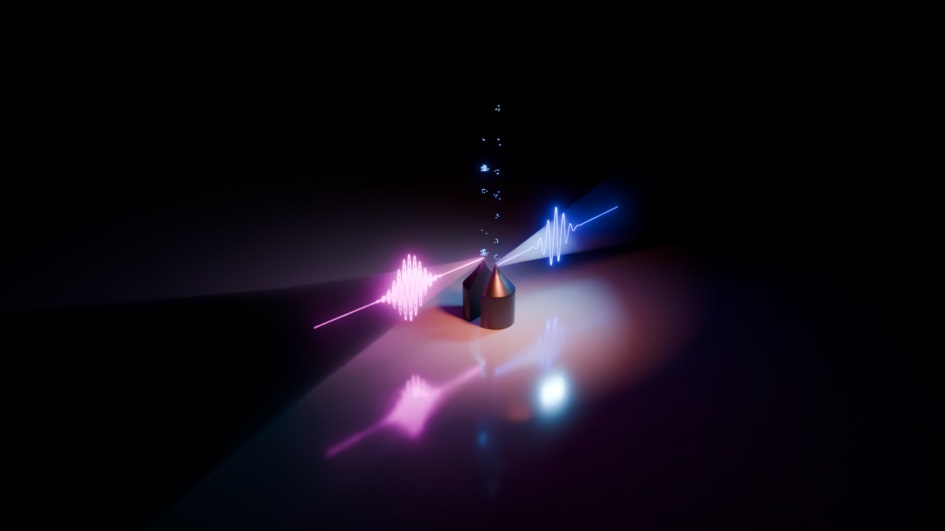13.05.2024
Photon-number distributions of various light sources have been studied extensively. However, little is known about the statistical distribution of electrons emitted under the effect of intense light. Researchers at the Max Planck Institute for the Science of Light (MPL) and Friedrich-Alexander-Universität Erlangen-Nürnberg (FAU) have now discovered extreme and highly unusual statistical events in electron-number distributions obtained when nanometer-sized metal needle tips are illuminated with ultrashort pulses of bright quantum light. The results, recently published in the journal Nature Physics, prove that the number of electrons is influenced by the light statistics and contributes to a deeper understanding of the process of electron emission. These findings will help to further improve electron microscopes.
In a collaborative project, teams led by Prof. Maria Chekhova at MPL and Prof. Peter Hommelhoff at FAU are investigating how extremely strong quantum light can interact with the matter. The researchers are illuminating nanometer-sized metal needle tips with pulses of classical light and quantum light. They detect the electrons released from the metal and study their statistical properties.
The electrons triggered by classical light follow a Poissonian distribution, which means that each electron is emitted independently of the others. The number of electrons emitted under the effect of classical light varies only slightly from pulse to pulse. By passing to a quantum light source, the so-called bright squeezed vacuum, which exhibits strong photon-number fluctuations, the researchers were able to show that the statistics of photons can be transferred to electrons. Using a bright squeezed vacuum, the scientists were able to measure extreme statistical events with up to 65 electrons from one light pulse, with an average value of 0.27 electrons per pulse. In the case of Poissonian statistics, the probability of such an event – an outlier exceeding the mean by a factor of 240 - would be as low as 10-128. By changing the number of modes of the squeezed vacuum, the scientists could tailor the electron-number distribution on demand.
“Our results show that photon statistics are imprinted from the driving light onto the emitted electrons, opening the door to new sensor devices and strong-field optics with quantum light and electrons,” says Maria Chekhova, research group leader at MPL.

At the lab 'Quantum Radiation' of Chekhova Research Group (© Tanya Chekhova)
To illustrate the dimensions with an example from everyday life, Jonas Heimerl, an FAU PhD student, explains: “If you spread raisins on muffins, the probability of finding a certain number of raisins in the muffin follows a Poisson distribution. Let us assume that there is an average (mean) of two raisins per muffin. It may therefore happen that there are no raisins or five raisins in the muffin, but in most cases, there will be two. However, the probability of getting more than 50 raisins is impossible with a Poisson distribution.”
Multi-electron events observed in these experiments were like finding 480 raisins in a single muffin – which definitely would make any raisin lover very happy.
Original Publication in Nature Physics
Heimerl, J., Mikhaylov, A., Meier, S. et al. Multiphoton electron emission with non-classical light. Nat. Phys. (2024).
https://doi.org/10.1038/s41567-024-02472-6





